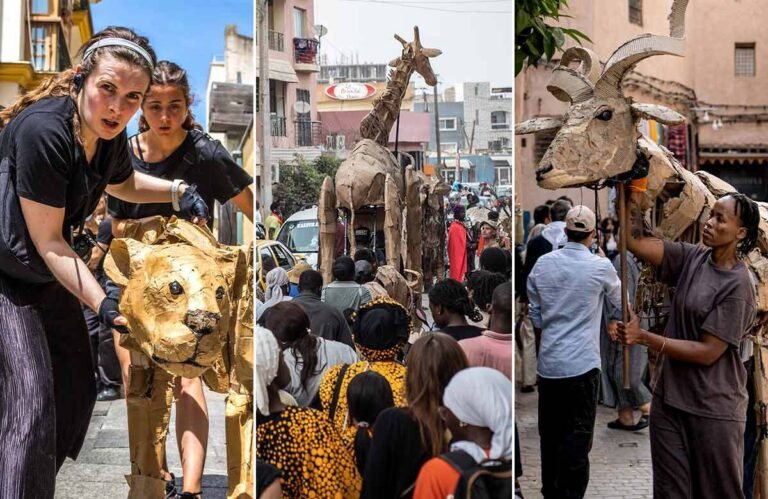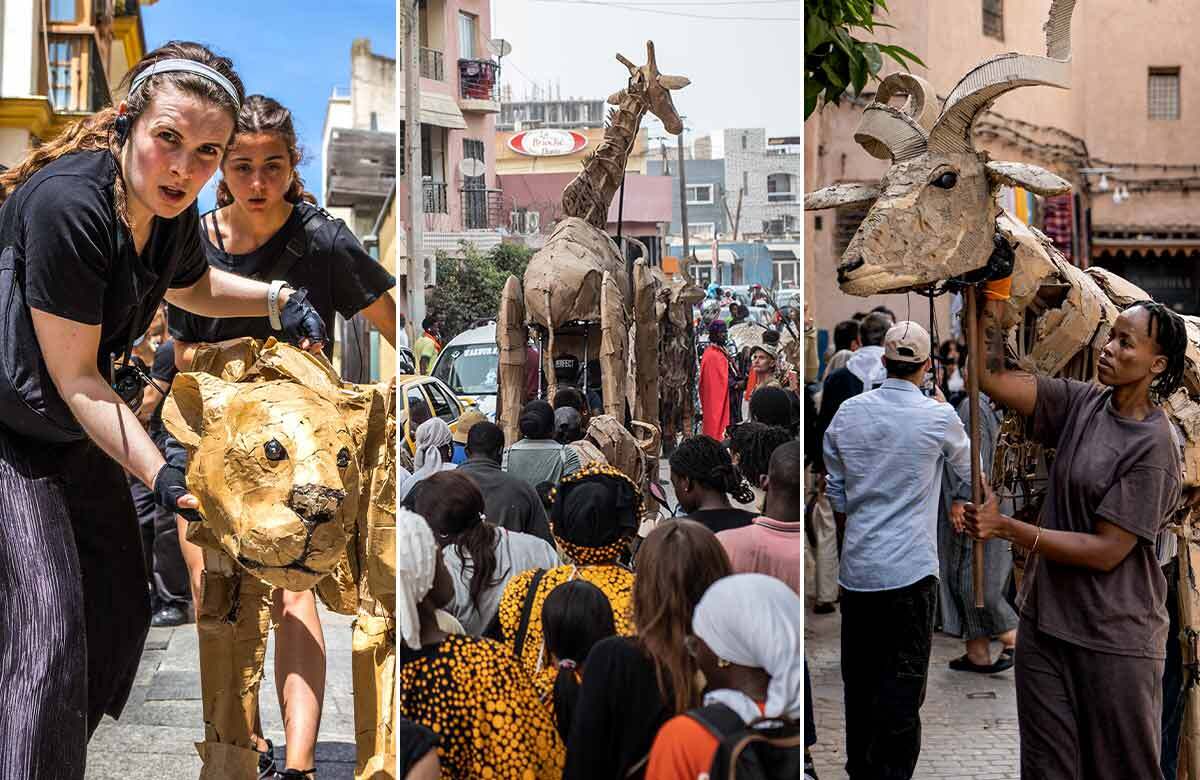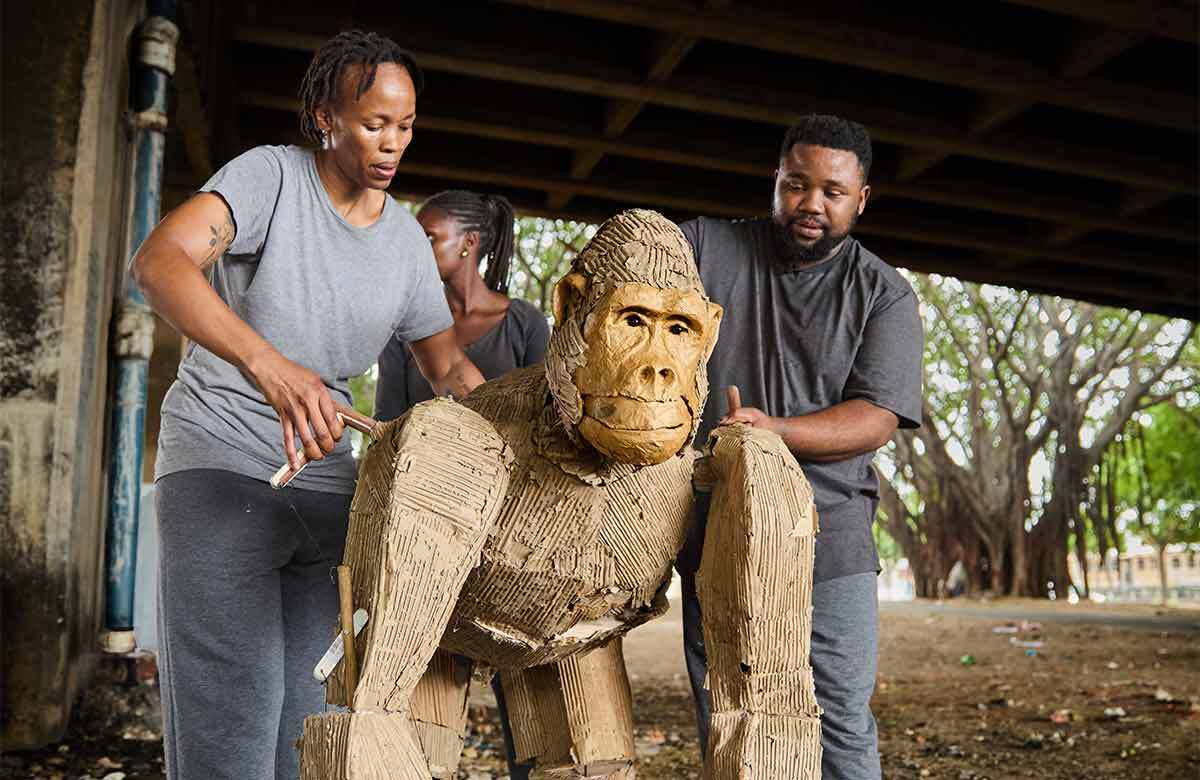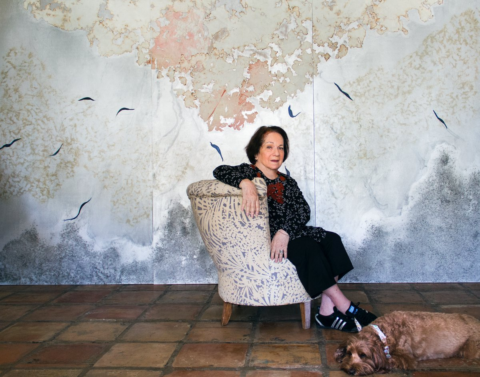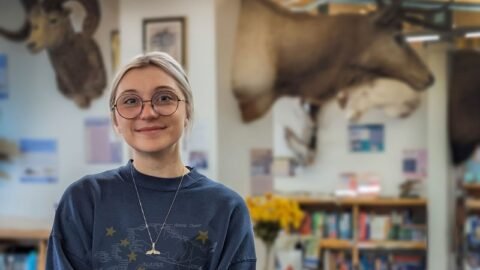Something wild this way comes. Over the past three months, a pack of life-size puppet animals has been making its way towards the UK, starting out in Kinshasa in the Democratic Republic of Congo before passing through Lagos, Dakar, Marrakech, Madrid, Venice and Paris.
On June 27, the pack will arrive in London, then head north to Manchester and onwards to the Arctic Circle. Stampeding through the cities, picking up more species as they go, the animals – lions, kudu, gorillas, zebra, giraffes – dramatise the reality of how climate change is pushing our planet’s ecosystems into unfamiliar territory. In so doing, the puppets force a confrontation with the biodiversity that human activity is destroying.
“A group of animals feels something that we don’t feel first, and they react to it,” says The Herds director, Amir Nizar Zuabi, describing the impetus for the production. “They start this massive migration and flood into our cities – becoming something that is hard to ignore.” The work emerged from his concern that, in mainstream discourse around environmental issues, “nature is not highlighted enough. But it’s an important way to create an emotional connection”.
Continues…
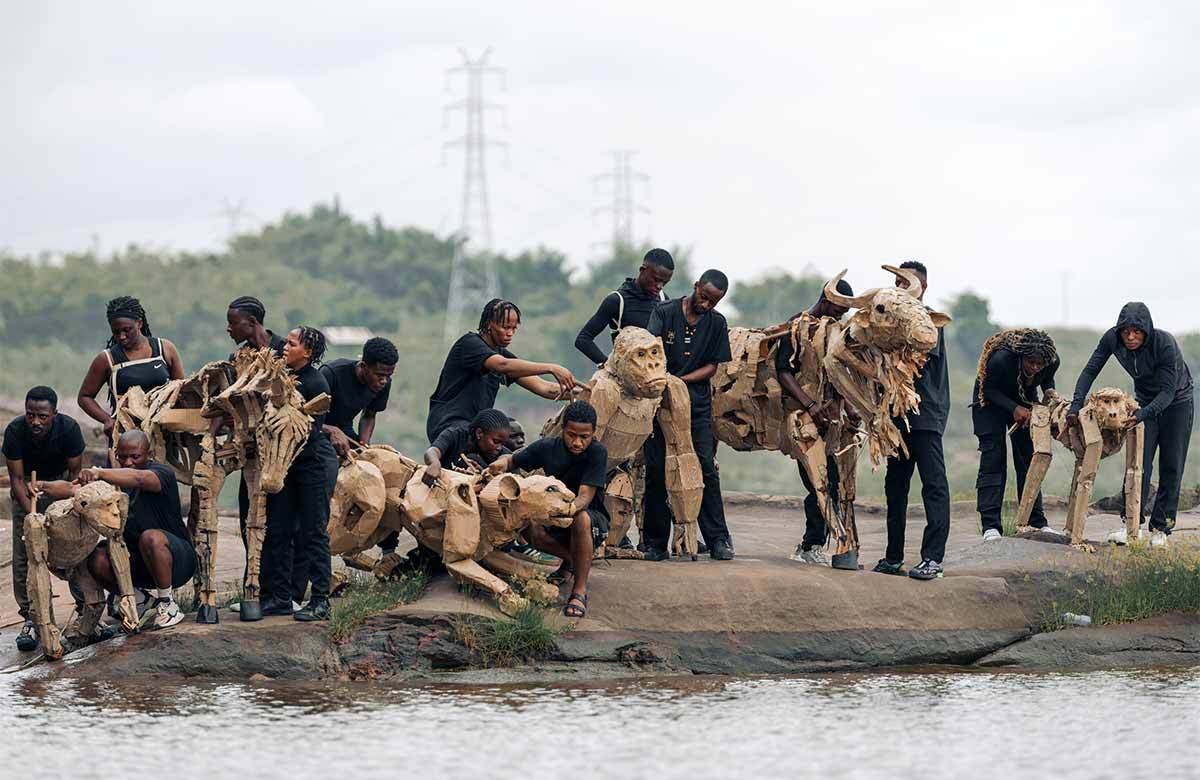
A puppet from The Herds project makes its way through Kinshasa in the Democratic Republic of Congo’s Congo Basin. Photo: Berclaire for The Walk Productions
With the focus in international climate negotiations so squarely on decarbonisation, it is true that the monumental scale of biodiversity loss we are living through risks being overlooked. The statistics are so horrifying that they can feel impossible to process. Last year, the WWF reported that average wildlife population sizes have declined by 73% in the past 50 years; that is less than a single human lifetime.
In climate circles, this era is often referred to as “the sixth mass extinction”. That threat extends to humans, too; our existence is entirely dependent on the wide-ranging biodiversity we are so rapidly destroying. This vital interconnection is why many environmental activists favour the slogan: “We aren’t fighting for nature, we are nature defending itself.”
Yet, shocking as the statistics are, they have failed to prompt a collective response appropriate to the magnitude of the challenge. This is where the arts can have a powerful impact. “We wanted to create a project that engages not just in a cerebral way, not just through the data and the knowledge, but also to create a visceral experience,” Zuabi explains.
Continues…
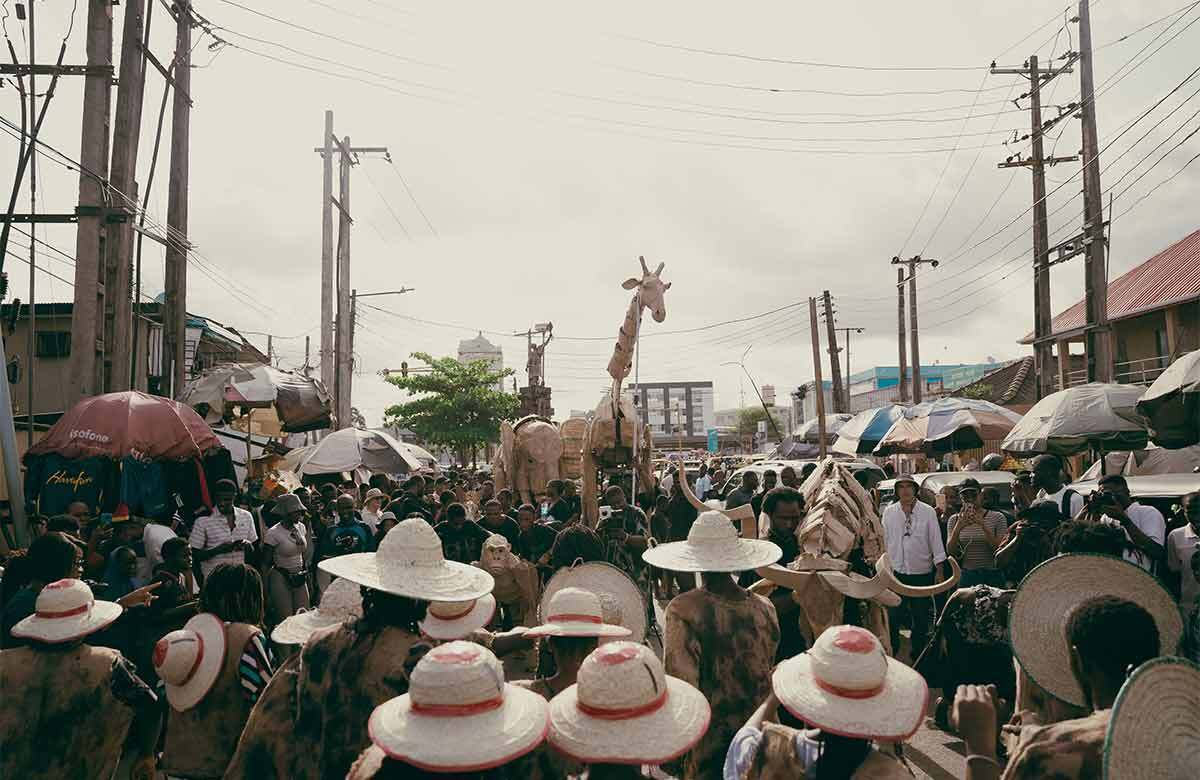
A puppet from The Herds project makes its way through the Sabo Yaba Market, in Lagos, Nigeria. Photo: Kashope Faje for 88 Life Studios
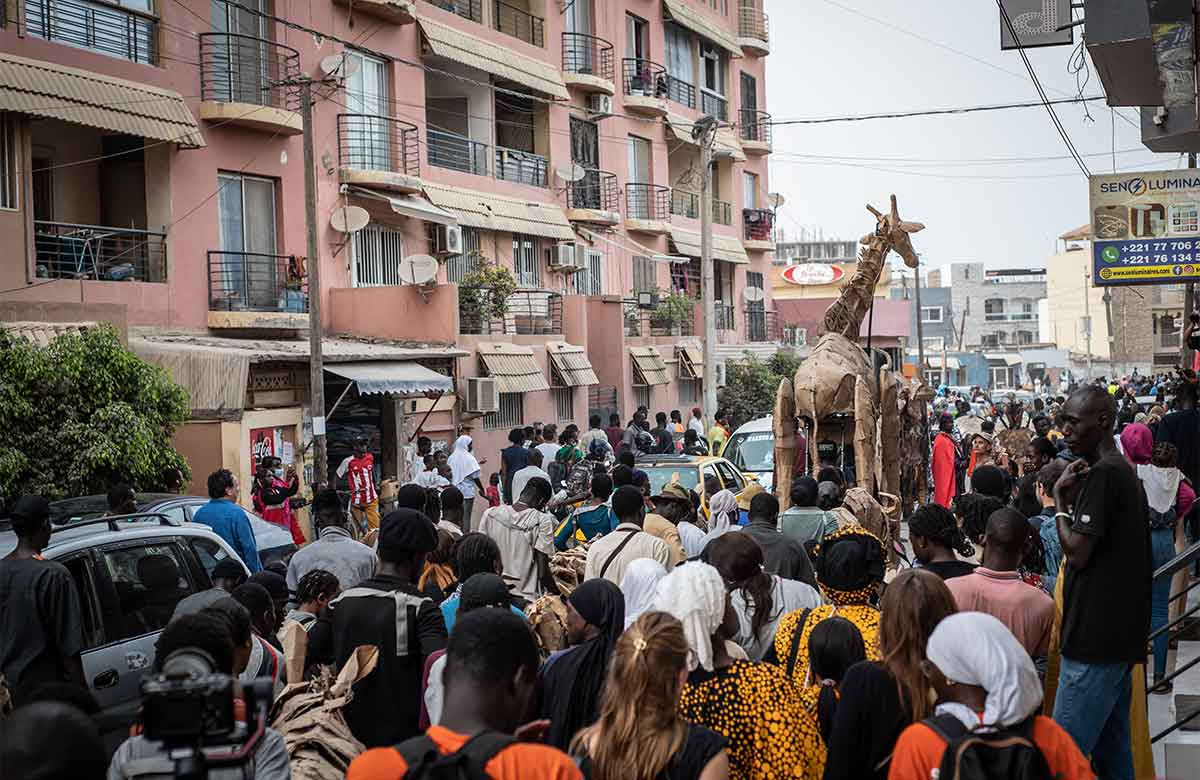
A puppet from The Herds project makes its way through the streets of Dakar, Senegal. Photo: Jean Baptise Joire
“Science is thin; it doesn’t echo further into you. Beauty, movement and complexity start creating a relationship – and I hope a relationship of care. We can do something with that; we can turn it into a commitment.” Watching the puppeteers of The Herds bring their animals to life by slowing down, paying attention, focusing on the subtlest movements, offers an invitation to the audience to bring this quality of attention to the natural world, too.
Performance artist Tom Bailey agrees that theatre can bring something new to our understanding of the biodiversity crisis. “Theatre can be more of a meditative space, for a reflection on the massiveness of these themes; it’s different to what a newspaper article [can give you].” His latest work, Wild Thing!, is an attempt to impersonate the 47,000 entries on the International Union for Conservation of Nature’s “red list” of species threatened with extinction; a list representing more than 28% of all species on earth.
Continues…
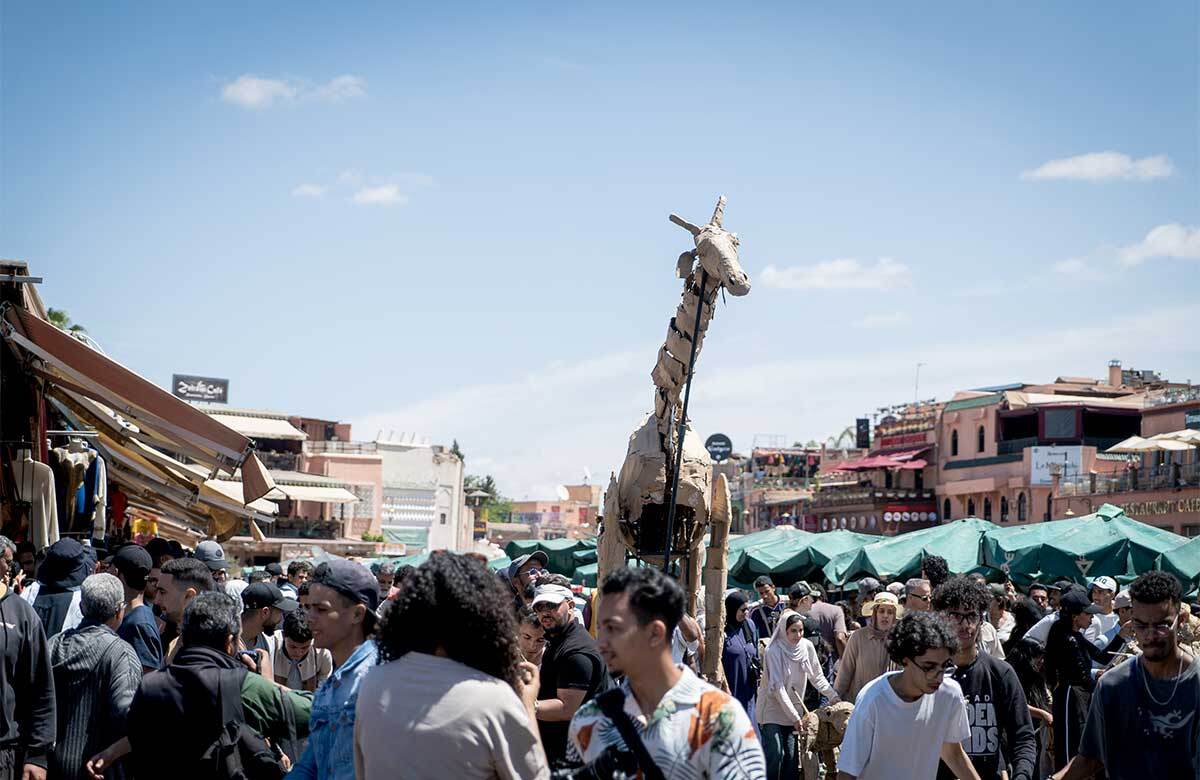
A puppet from The Herds project makes its way through the Marrakesh Medina, Morocco. Photo: Oussama Oulhiq
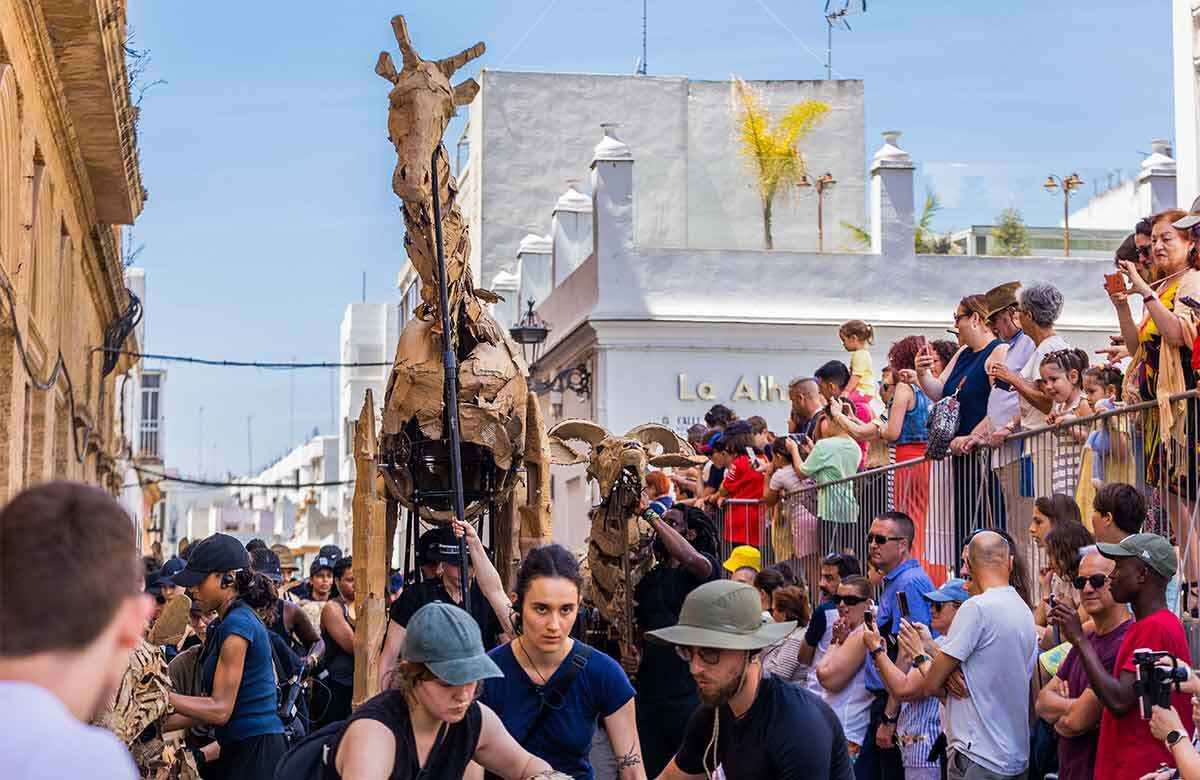
A puppet from The Herds project makes its way through the streets of San Fernando, Cadiz. Photo: Ayuntamiento de San Fernando
“The human body cannot keep up with the sheer scale of what is happening,” he says. The pathos – and humour – in Wild Thing! derives from this dissonance. Just looking at this list, I don’t know what 99% of these species are – the Lonely Blenny, the White Mimic, Ze Concept of Crab”.
The struggle of the show’s protagonist to portray them all on stage becomes a metaphor for the struggle to make sense of what the data on species extinction really means. “We’re trying to open up audience appreciation of the sheer scale of biodiversity, the number of different forms of life on earth… it’s about a sense of wonderment, anticipation and humility”.
Both artworks indicate that to reach a sustainable and sustaining relationship with nature requires that Eurocentric cultures – who have done so much damage to biodiversity – undergo a rapid transition of the imagination. We must be able to recognise “other than human” beings as having the same complexity, agency and rights as we do. Of course, many indigenous cultures around the world have always maintained this perspective.
“We’re trying to open up audience appreciation of the sheer scale of biodiversity, the number of different forms of life on earth… it’s about a sense of wonderment, anticipation and humility” – Tom Bailey, Performance artist
As the environmentalist and author of Braiding Sweetgrass, Robin Wall Kimmerer, puts it: “In the Western tradition, there is a recognised hierarchy of beings, with the human being on top – the pinnacle of evolution, the darling of creation – and the plants at the bottom. But in native ways of knowing, human people are often referred to as ‘the younger brothers of creation’. We say that humans have the least experience with how to live and thus the most to learn – we must look to our teachers among the other species for guidance.”
Recently, Southampton City Council held an “interspecies democracy meeting”, based on a format created by eco-philosophers Joanna Macy and John Seed and inspired by indigenous knowledge systems. Amateur actors wore costumes and took on the roles of the other-than-human residents of the city – Atlantic salmon, fox glove, nettle and butterfly – speaking up on their behalf for their right to coexist harmoniously in the local environment.
Continues…
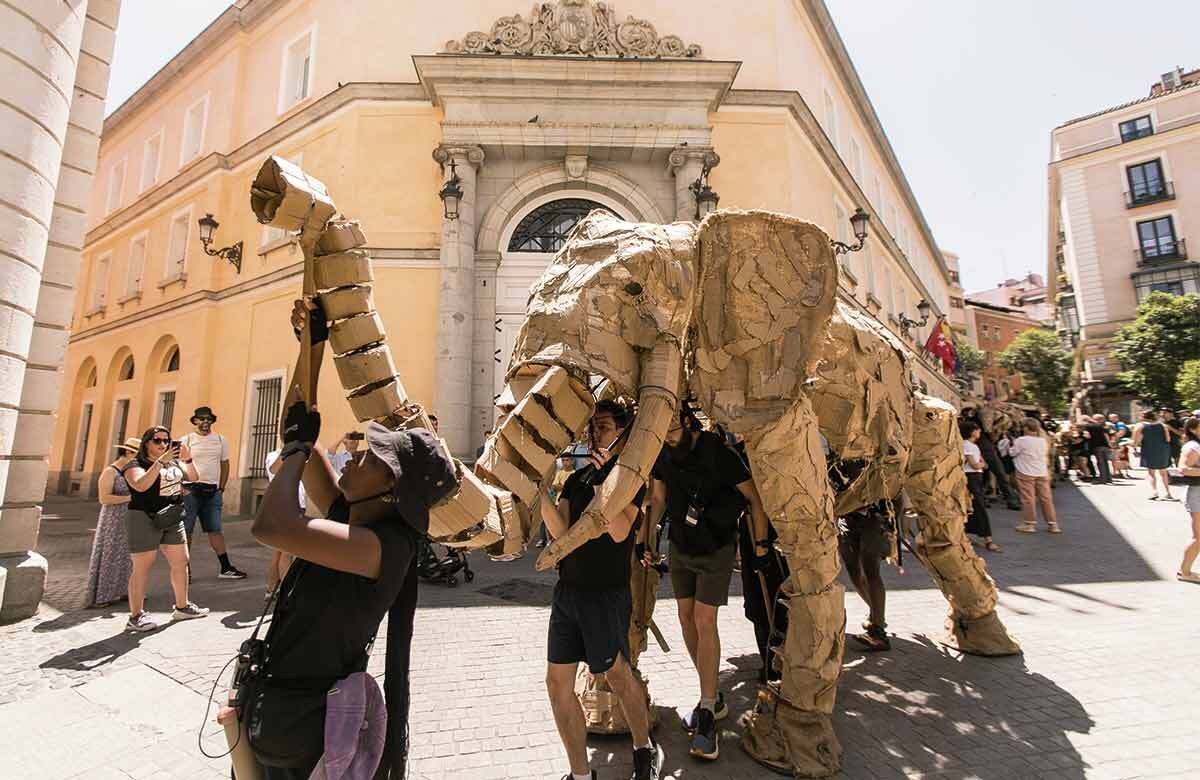
An elephant puppet from The Herds project makes its way through the streets of Madrid, Spain. Credit: Lukasz Michalak
This theatrical exercise had a serious intent. “We’re exploring what it means to understand the perspectives of our non-human neighbours in Southampton,” said Christelle Blunden, chair of Southampton National Park City, in an interview for the BBC. “We’re trying to raise a serious question about our relationship with the natural world, and we are trying to get people to understand how dependent we are on other species for our way of life.”
While the comments on the BBC’s video of the event indicate that many still have a hard time taking this perspective seriously, it is reflective of a broader shift in how the rights of nature are being recognised. In recent years, across the globe, legal “personhood” has been granted to rivers, lagoons and national parks; nature has been given a place on the board of companies including Faith in Nature and Patagonia. The evidence is that a profound reimagining of how we understand the natural world is already underway.
To normalise such a huge shift in the collective imagination is surely the work of artists. Zuabi speaks of The Herds as a way of “letting our political imagination rewild itself”. He calls for “a big stubborn oak tree that won’t go anywhere in our parliaments, foxes running around the House of Lords. I mean literally and figuratively and poetically”. As the animals rampage through the heart of our cities, breaking into the environments designed to keep them out, perhaps we can let them break through something in our consciousness, too. “Have the badgers badger and the owls hoot!”

